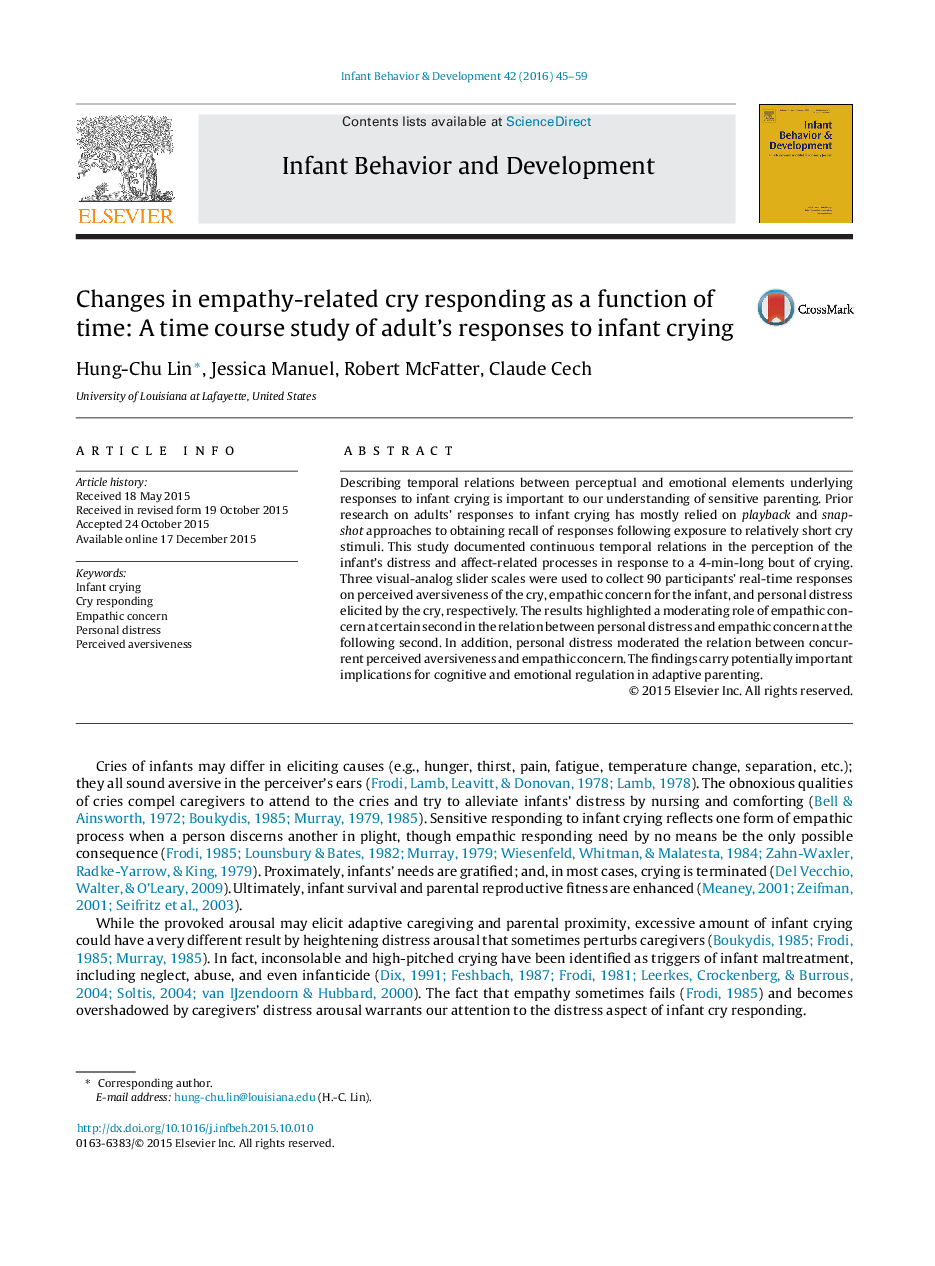| Article ID | Journal | Published Year | Pages | File Type |
|---|---|---|---|---|
| 917142 | Infant Behavior and Development | 2016 | 15 Pages |
•Perceived aversiveness, empathy, and distress in cry responding were correlated.•Personal distress moderated the link between perceived aversiveness and empathy.•The link between distress and empathy was moderated by previous second's empathy.
Describing temporal relations between perceptual and emotional elements underlying responses to infant crying is important to our understanding of sensitive parenting. Prior research on adults’ responses to infant crying has mostly relied on playback and snapshot approaches to obtaining recall of responses following exposure to relatively short cry stimuli. This study documented continuous temporal relations in the perception of the infant's distress and affect-related processes in response to a 4-min-long bout of crying. Three visual-analog slider scales were used to collect 90 participants’ real-time responses on perceived aversiveness of the cry, empathic concern for the infant, and personal distress elicited by the cry, respectively. The results highlighted a moderating role of empathic concern at certain second in the relation between personal distress and empathic concern at the following second. In addition, personal distress moderated the relation between concurrent perceived aversiveness and empathic concern. The findings carry potentially important implications for cognitive and emotional regulation in adaptive parenting.
